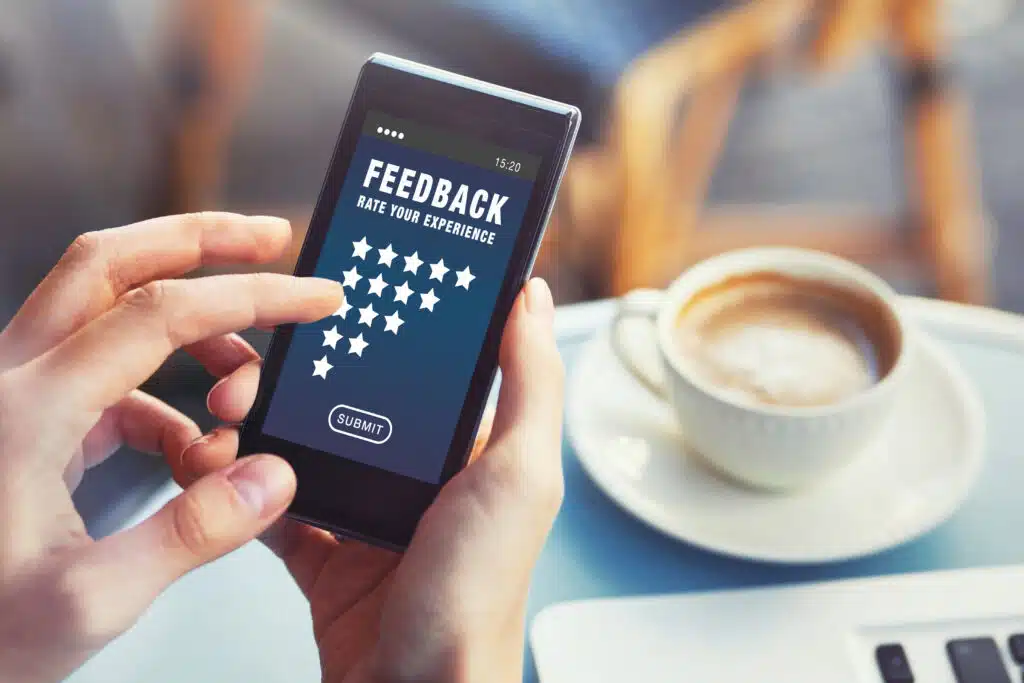Picture this: you recently started a campaign and sold out on your services. You had a busy schedule and served your clients with dedication. Sky seemed the limit for you this month.
Now, would you know the answer to whether the clients liked your services or not? Whether they recommend your services to their friends and family? If they even remember your company name?
That is when follow-up messages come along. Follow-up messages show your appreciation for their business, help improve customer retention, understand how likely they would be to promote your business, encourage repeat visits, and much more.
In today’s blog post, we will go through how to build effective follow-up messages.
Why Appointible?
Reasons to send appointment follow-up messages
Follow-up messages show appreciation for your customer’s business and are essential in building strong relationships. Here are a few reasons why you should strongly consider running follow-up campaigns.
A personalized greeting
Begin your message with a personalized greeting that addresses the customer by name. This can help create a more personal connection with the customer and make the message more genuine.
Add some touch of personalization: refer them by their name and potentially mention the service they got. You can also try to be more casual and say, “pleasure meeting you,” for example.
Show appreciation
The first and main reason to send follow-ups is to show how much you appreciate having the person as a customer. Feeling valued and appreciated alone are the main reasons clients would return to your business and recommend you to others.
Improve customer retention and repeat visits.
The process of showing appreciation alone increases the odds of retaining the customer. Yes, it is also because of the “gratitude” effect and clients feeling appreciated, but it goes beyond that.
Follow-up messages can help you address any issues or concerns a customer may have had during their appointment; you can suggest your clients save your address on the Google Maps app so next time it’s easier to find you, ask you to follow on social media, and more.
Asking for feedback and reviews
Another way to connect with your clients is by asking for genuine feedback. Don’t ever be afraid of negative feedback; by the way, they are just a rich tool you can use to improve your services further.
Feedbacks are the only way you can keep the quality of your services in check, and follow-up messages are the perfect place to ask for them. Depending on how your client felt about your service, you can point quickly to a review platform and ask for a positive message, and 5 starts.
Provide incentives or special offers.
You can send a follow-up with a discount for their next session or a coupon they can simply forward to a friend. Even if your clients don’t use or forward any of these messages right away, they will have it on their phone – and next time they need the same service, chances are you will be their top option.
Channels for sending appointment follow-up messages
There are many channels you can use to send follow-up messages. Next, we are going to focus on the three main ones:
Follow-up email
Phone calls
SMS or text messaging
Let’s start with emails.
Follow-up emails

Emails are to follow-ups as coffee is to Monday morning. You can do without it, but it makes getting going much easier. Emails are a popular and effective way to reach customers after their appointment.
Here are some key elements to consider when crafting your follow-up emails:
Personalized subject line
The subject line is essentially the title of the email. It is the first thing your clients will see in their inboxes and the main factor that drives a successful (or failed) open rate. Personalization is one ingredient you can use to make your subject line catchy.
The secret sauce here is that you don’t have to manually type your clients’ names into each follow-up email. Most email marketing tools use “merge tags” that pull the customer’s name (or other information) from your database.
For example, if your customer’s name is John Smith, your subject line might read: “Thanks for visiting, John! How was your appointment with [Business Name]?” or “How did you enjoy your massage at [Business Name], [Customer Name]?”
All things considered, a gentle follow-up email goes a long way.
Timing and frequency of emails
The timing and frequency of your follow-up emails can be important in ensuring that your customers stay engaged without feeling overwhelmed.
A good rule of thumb is to send your first follow-up email within 24-48 hours of the appointment and follow up every 2-4 weeks between the previous email and the next one.
Writing effective follow-up emails
Here are a few tips for writing effective follow-up email messages:
Get to the point quickly so readers know what is in it.
Use a friendly and conversational tone that reflects your brand’s personality.
Provide value to the customer by including helpful tips or information about their recent appointment.
Include a clear call-to-action (CTA) that encourages customers to book another appointment or provide feedback on their experience.
Follow-up email template
Here’s an example template for an initial email:
“Subject: Walking on the clouds after the massage, [Customer Name]?
Hey [Customer Name],
I just wanted to reach out and say thank you for choosing [Business Name] for your recent appointment. We hope you had an awesome experience with us and feel relaxed and refreshed!
We’re always looking for ways to improve, so if you have any feedback or suggestions, we’d love to hear them. Just hit reply and let us know what’s on your mind.
Oh, and if you’re interested in booking another appointment, we’ve made it easy for you. Ready to keep that chill vibe going? Click the link below to book your next massage therapy session with us.
[Insert Link to Online Booking Page]
Thanks again for choosing us, and we can’t wait to see you again soon!
Best,
[Your Name]
[Business Name]
Phone call follow-up

If you’re looking for a more personal touch, consider following up with your customers over the phone. Here are a few things to keep in mind when planning your phone call follow-up strategy:
Timing and frequency of phone calls
Calling is definitely a great way to create a more personal connection with your customers – probably just follow-up meeting in person beats that.
When calling your clients, respecting their time and space is important. Try to schedule your phone call follow-ups during business hours. Ideally, you will want to follow up with your customers within a week of their appointment and check in with them every 2-3 months after that.
Tips for effective phone calls
When you do make your follow-up phone calls, here are a few tips to keep in mind:
Introduce yourself and remind the customer of their recent appointment with your business.
Be friendly and personable but also respectful of their time and privacy.
Ask open-ended questions encouraging the customer to share their thoughts and feelings about their experience.
Take notes on the conversation to follow up on any issues or suggestions later.
End the call by thanking the customer for their time and inviting them to reach out with any further feedback or questions.
An effective phone call follow-up
This is how you should probably start the conversation:
“Hi [Customer Name], this is [Your Name] from [Business Name]. You came by last week for a [name of the service]. I wanted to touch base and see if your overall experience was positive.”
Once you’ve opened the conversation and asked for feedback, listen carefully to the customer’s responsibility. Be sure to take notes and ask follow-up questions to better understand their experience. If they have any concerns or issues, address them promptly and offer solutions.
If your client had a good experience with you, this is a great time to ask for a review and let them know they can book an appointment with you anytime.
And if the response is negative, express how much their honest opinion means to your business. In case your client complained about the parking lot, for example, take note of that; a great way is to follow up again in the future to tell your clients the issue was solved.
Here are some additional tips for effective phone calls:
Be polite and friendly throughout the conversation.
Keep the conversation brief and to the point.
Don’t be too pushy or aggressive to get feedback or encourage another appointment.
Offer incentives or discounts for customers who book another appointment during the call.
If you have a follow-up phone call meeting with these tips, you will likely have a happy customer.
SMS follow-up message

Our final medium of writing a follow-up is SMS text messages. The biggest advantage of using SMS messages is that they have jaw-dropping open rates above 90% (as opposed to 20% with emails).
The reasons are threefold.
First, SMS lands directly into the user’s phone. Yes, emails, too, and this is where reason number two comes in:
Second, because they are short and to the point. People know and expect SMS messages to be concise and thus open them more willingly. If you think about it, this partially explains the success of Twitter.
And last, SMS is one of the few notifications that rarely gets deactivated from someone’s mobile. Sure, you can deactivate your email and social media notifications, but your SMS ones? Unlikely. We need it to receive second-factor authentications when ordering food, etc.
SMS follow-up timing and frequency
SMS messages can be seen as more intrusive if sent at the wrong time or too frequently. Here are some guidelines to follow.
Timing
The best time to send an SMS follow-up message is within 24 hours of the appointment. Customers will remember your service enough to give feedback and respond to your message.
The time of the day is the next obvious thing to pay attention to. Send messages during regular business hours, between 9am-7pm, preferably in the morning, as this is when open rates have shown to be the highest.
Frequency
Regarding frequency, use the same approach as an email message. Depending on the type of service you offer, create a follow-up every 4 weeks or so between one SMS message and another.
Tips for writing effective SMS messages
Here are some tips for writing effective SMS messages:
Keep it short and sweet: Remember that SMS messages have a 160-character limit, so keep your message concise and to the point.
Be conversational: Use a friendly tone that reflects your brand’s personality.
Personalize when possible: Use the customer’s name or other relevant information to make the message more personalized.
Include a clear call-to-action (CTA): Encourage the customer to take action by providing a clear CTA, such as “Book your next appointment now” or “Leave us a review.”
Timing is key: Send your SMS message at an appropriate time, such as during regular business hours or when the customer is most likely available.
Examples of effective SMS follow-up messages
And here are a few examples for your
Hey [Customer Name], thanks for choosing [Business Name]! It was great meeting you. We hope you enjoyed your recent appointment. Click here to book your next one : [Insert Link].”
“Hi [Customer Name], it’s [Your Name] from [Business Name]. Just wanted to check in and see how you’re feeling after your appointment.”
Hey there, [Customer Name]; we just wanted to say thanks for stopping by. It was awesome having you! If you have any feedback or suggestions for us, we’d love to hear them.
Feeling relaxed and rejuvenated after your appointment at [Business Name], [Customer Name]? We’re so glad to hear it! Let us know if you need any help booking your next visit.
Simple form vs. NPS follow-up messages

Alright, let’s talk about Simple Form vs. NPS.
Simple forms are just what they sound like – a straightforward questionnaire that asks customers for feedback on their recent appointment. These forms usually ask customers to rate their experience on a scale of 1-10 or provide a brief written response. They are easy to fill out and give you a general sense of how your customers feel.
Now, NPS follow-up messages, on the other hand, take a slightly different approach.
NPS stands for “Net Promoter Score,” a metric measuring customer loyalty and satisfaction. Instead of just asking customers to rate their experience, NPS surveys ask customers to rate how likely they are to recommend your business to a friend or colleague on a scale of 0-10. Based on their answer, customers are then categorized as either:
Promoters – those who are likely to recommend your business;
Passives – those who are indifferent;
Detractors – those who are unlikely to recommend your business.
So, what are the pros and cons of each?
Pros and cons of simple forms
Simple forms are great because they’re easy to create and analyze. You can quickly see how customers rate their experience and what areas you need to improve upon. People respond to them more than they would to a complex NPS survey.
They don’t give you a ton of context or insight into why customers are giving you certain ratings, though.
Pros and cons of NPS surveys
NPS surveys give you a deeper understanding of customer loyalty and satisfaction. Understanding their likelihood to recommend your business tells a lot about their experience with your business, and – even though it’s a longer stretch – also provides insights on the level of the competition.
However, NPS surveys have a steep learning curve. They are more complex to create and analyze, and some customers may not fully understand the rating scale.
How to choose the right method for your business
Well, it really depends on what you’re looking to achieve. If you just want a quick and easy way to gather feedback and identify areas for improvement, simple forms may be the way to go. But if you’re looking to measure customer loyalty and satisfaction more nuancedly, NPS surveys could be a great option.
So there you have it, folks! Simple forms versus NPS follow-up messages – it’s all about finding the right fit for your business.
Automated ways to send appointment follow-up messages
As we approach the end of the article, you might wonder, “perfect, all sounds good, but how do I actually send these follow-up messages.” There are just two ways, really:
You send them manually;
You automate them with a tool.
This is what we will discuss in this section:
How automated follow-up messages work
Automated follow-up messages use software that automatically sends follow-up messages to your clients after their appointment. This can include both email and SMS messages. Some companies that offer automated follow-up message services include Mailchimp, Active Campaign, and Constant Contact.
The way it works is that you set up a series of follow-up messages in advance. Then, the software sends them out at specified intervals after the appointment.
These tools are much more than follow-up message automation, by the way. So if you work with sales, you can generate a meeting request, gather lists from a networking event, and so on.
You can customize the content of each message, add merge tags to personalize the messages with the client’s name, and track the open and response rates to see how effective your messages are.
Benefits of using automated follow-up messages
First, they save time and effort by eliminating the need for manual follow-up messages. Second, they can improve customer retention and satisfaction by providing timely and personalized communication. Third, they can help to increase repeat bookings by reminding customers to schedule their next appointment.
Using automated follow-up messages also allows you to track the effectiveness of your follow-up campaign. You can see which messages get the most responses and use that data to improve your follow-up messages.
Setting up automated follow-up messages with Appointible
Appointible is an online booking software designed specifically for service businesses. Our platform includes tools to help you schedule appointments, nurture clients, organize staff calendars, and run text marketing campaigns.
